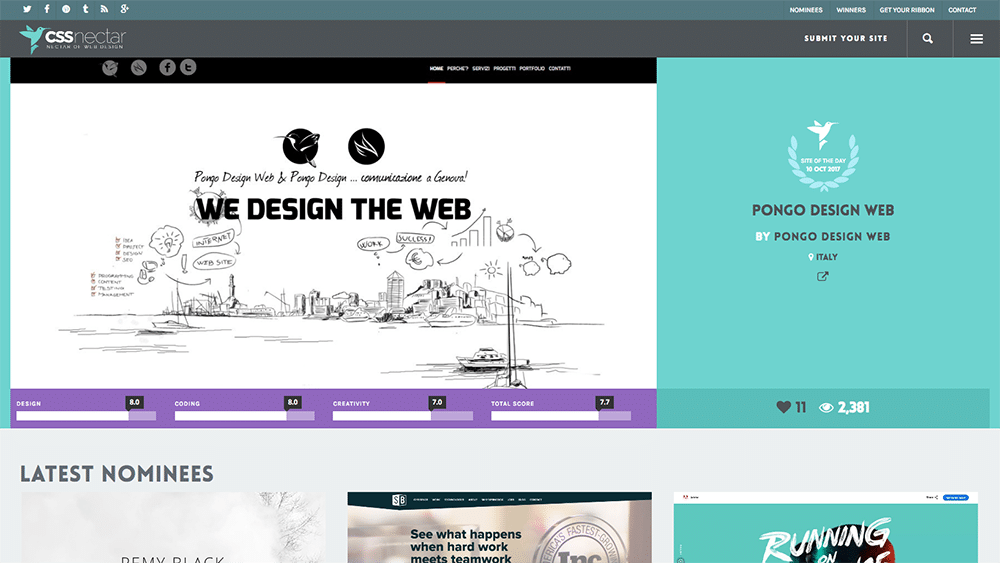Just how to Maximize Your Website's Efficiency with Advanced Web Design Approaches
Just how to Maximize Your Website's Efficiency with Advanced Web Design Approaches
Blog Article
A Detailed Overview of the most effective Practices in Website Design for Creating User-friendly and Accessible Online Systems
The efficiency of an online system pivots considerably on its layout, which must not just bring in individuals yet also assist them seamlessly through their experience. Finest methods in internet style include a series of techniques, from responsive layouts to obtainable navigating structures, all focused on fostering intuitive interactions. Understanding these concepts is crucial for developers and developers alike, as they directly impact user satisfaction and retention. However, the details of each technique commonly expose deeper implications that can change a fundamental interface into a remarkable one. What are the key components that can boost your platform to this level?
Understanding Customer Experience
Understanding individual experience (UX) is pivotal in website design, as it directly affects how site visitors interact with a web site. A well-designed UX makes sure that users can browse a site without effort, access the info they look for, and total desired activities, such as authorizing or making an acquisition up for an e-newsletter.
Key elements of reliable UX design include functionality, availability, and visual appeals. Usability focuses on the convenience with which users can achieve jobs on the website. This can be achieved through clear navigation frameworks, sensible material company, and responsive comments systems. Ease of access makes sure that all customers, consisting of those with disabilities, can interact with the website efficiently. This includes adhering to established guidelines, such as the Web Content Ease Of Access Guidelines (WCAG)
Aesthetics play an important function in UX, as aesthetically appealing styles can enhance individual fulfillment and interaction. Color design, typography, and images must be thoughtfully chosen to produce a natural brand name identification while additionally assisting in readability and comprehension.
Eventually, prioritizing customer experience in web design cultivates higher user contentment, urges repeat check outs, and can considerably improve conversion rates, making it a basic element of successful digital approaches. (web design)
Value of Responsive Design
Responsive layout is an important component of contemporary internet growth, making sure that websites supply an optimum viewing experience across a variety of gadgets, from desktop computers to smart devices. As user habits significantly changes towards mobile browsing, the requirement for internet sites to adjust effortlessly to numerous display dimensions has actually become critical. This versatility not just boosts use but also considerably effects individual involvement and retention.
A receptive layout employs liquid grids, flexible images, and media queries, permitting a cohesive experience that preserves performance and visual honesty no matter tool. This method removes the requirement for individuals to zoom in or scroll horizontally, leading to an extra intuitive communication with the content.
Furthermore, online search engine, especially Google, focus on mobile-friendly sites in their rankings, making receptive layout essential for maintaining visibility and ease of access. By adopting responsive style concepts, businesses can get to a more comprehensive target market and enhance conversion rates, as customers are more probable to involve with a site that offers a regular and smooth experience. Eventually, responsive layout is not just an aesthetic option; it is a critical need that shows a commitment to user-centered layout in today's digital landscape.
Simplifying Navigating Frameworks
A well-structured navigation system is crucial for boosting the individual experience on any website. Streamlining navigation frameworks not only aids customers in discovering information promptly but additionally promotes involvement and minimizes bounce rates. To attain this, internet designers need to prioritize clearness via making use of uncomplicated labels and groups that show the web content precisely.

Integrating a search function additionally enhances usability, permitting users to locate material directly. Additionally, carrying out breadcrumb trails can give customers with context regarding their place within the website, advertising ease of navigation.
Mobile optimization is an additional critical facet; navigation should be touch-friendly, with plainly specified web links and switches to fit smaller displays. By lessening the variety of clicks needed to gain access to material and making certain that navigating corresponds throughout all web pages, designers can develop a seamless individual experience that urges exploration and minimizes irritation.
Prioritizing Access Standards
Around 15% of the global population experiences some type of special needs, making it crucial for web developers to focus on accessibility requirements in their tasks. Ease of access incorporates various elements, consisting of visual, auditory, cognitive, and electric motor impairments. By adhering to developed standards, such as the Internet Content Availability Standards (WCAG), designers can create comprehensive electronic experiences that accommodate all individuals.
One basic technique is to make certain that all content is perceivable. This consists of supplying alternate text for photos and making certain that videos have captions or transcripts. Moreover, key-board navigability is important, as many customers depend on key-board shortcuts rather than mouse interactions.
 Furthermore, shade comparison should be very carefully taken into consideration to suit people with aesthetic impairments, guaranteeing that text is readable versus its history. When creating types, labels and error messages should be descriptive and clear to aid customers in finishing tasks efficiently.
Furthermore, shade comparison should be very carefully taken into consideration to suit people with aesthetic impairments, guaranteeing that text is readable versus its history. When creating types, labels and error messages should be descriptive and clear to aid customers in finishing tasks efficiently.Lastly, performing use screening with individuals that have handicaps can supply important understandings - web design. By focusing on ease of access, web developers not only abide by lawful requirements however likewise expand their target market reach, cultivating an extra inclusive online environment. This commitment to ease of access is necessary for a truly navigable and user-friendly web experience
Using Aesthetic Pecking Order
Quality in style is vital, and making use of aesthetic hierarchy plays a critical function in achieving it. Aesthetic hierarchy describes the arrangement and presentation of components in such a way that plainly shows their significance and overviews user interest. By purposefully using dimension, comparison, color, and spacing, designers can produce an all-natural flow that directs individuals via the material Bonuses seamlessly.
Utilizing larger typefaces for headings and smaller ones for body text develops a clear distinction between areas. Additionally, employing vibrant colors or different backgrounds can draw interest to crucial details, such as call-to-action switches. White area is equally crucial; it aids to prevent clutter and enables individuals to concentrate on one of the most crucial elements, enhancing readability and total individual experience.
An additional key aspect of visual pecking order is using images. Appropriate pictures can improve understanding and retention of information while also separating text to make content much more absorbable. Inevitably, a well-executed aesthetic power structure not just improves navigation yet also fosters an intuitive interaction with the web site, making it most likely for customers to accomplish their purposes successfully.
Conclusion

In summary, adherence to best practices in internet design is crucial for creating accessible and intuitive on-line platforms. Highlighting responsive layout, streamlined navigation, and accessibility standards cultivates a comprehensive and easy read here to use setting. In addition, the efficient use of visual power structure enhances customer engagement and readability. By prioritizing these aspects, web designers can substantially enhance customer experience, guaranteeing that on the internet platforms meet the diverse needs of all users while helping with effective interaction and fulfillment.
The efficiency of an online platform pivots substantially on its style, which should not just bring in individuals but also guide them seamlessly through their experience. By embracing responsive design principles, businesses can get to a wider audience and enhance conversion rates, as customers are extra most likely to engage with a website that offers a constant and smooth experience. By adhering to developed standards, such as the Web Web Content Access Standards (WCAG), designers can produce inclusive digital experiences that cater to all customers.
White area is just as essential; it assists to stay clear of visit this page clutter and enables customers to focus on the most vital elements, boosting readability and total individual experience.
By focusing on these elements, internet developers can considerably enhance customer experience, guaranteeing that on-line systems satisfy the varied needs of all individuals while promoting efficient interaction and complete satisfaction.
Report this page